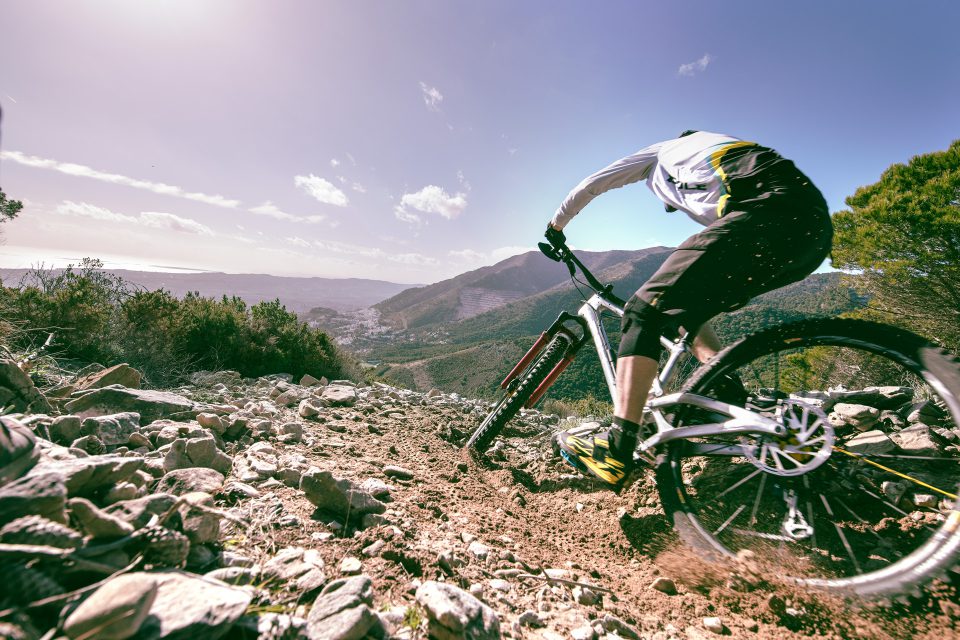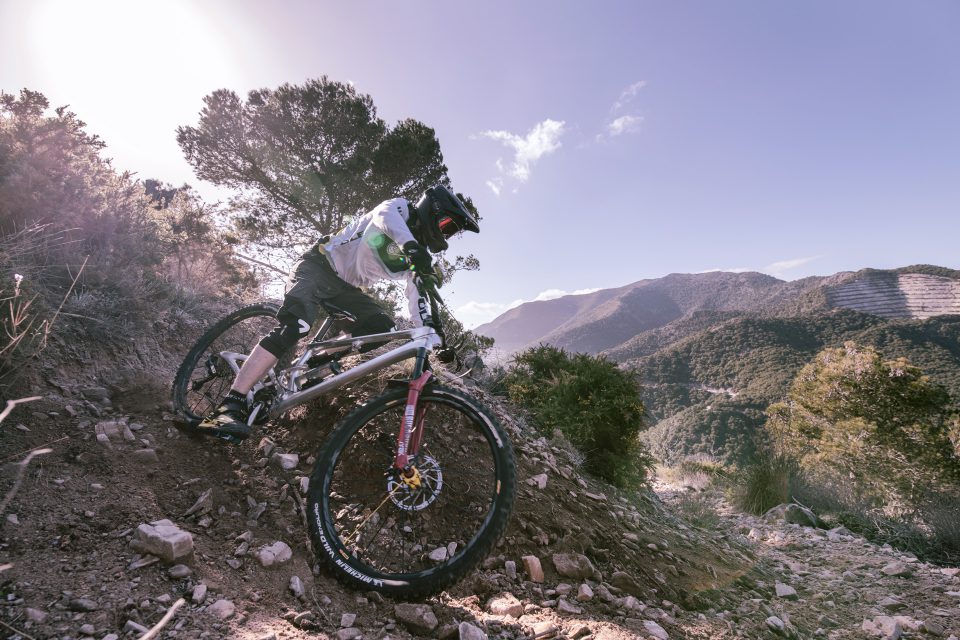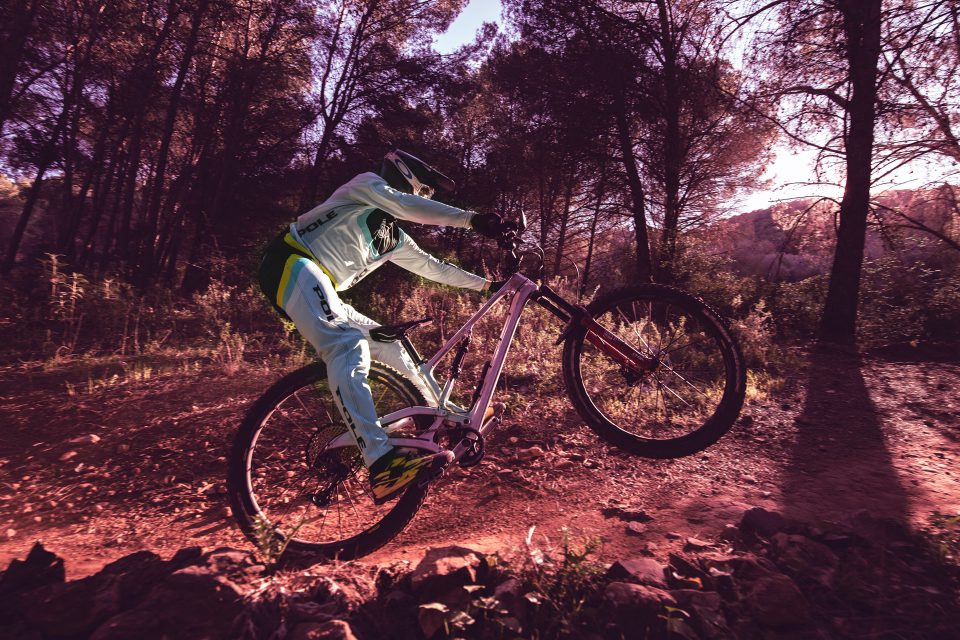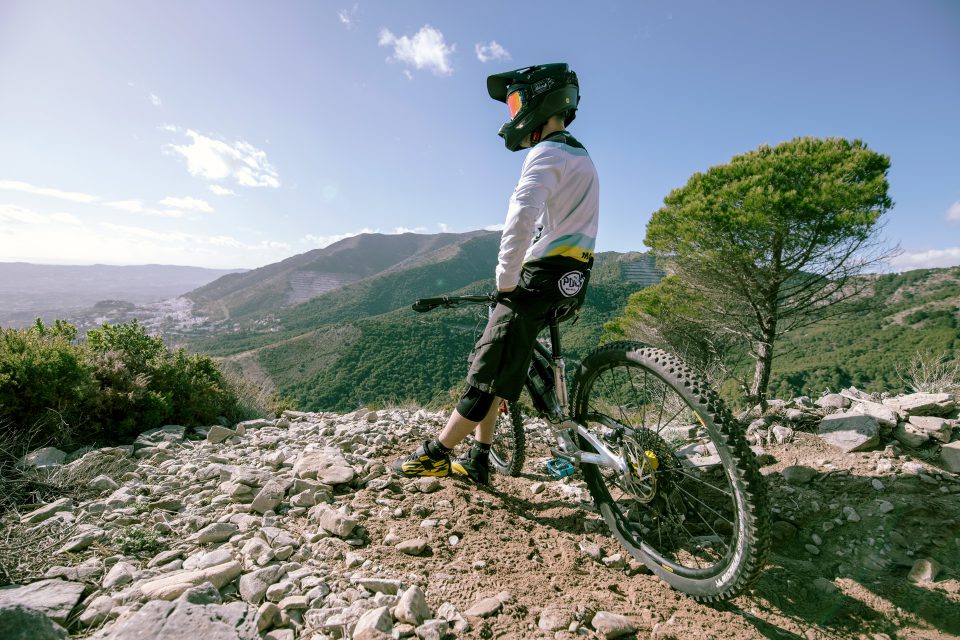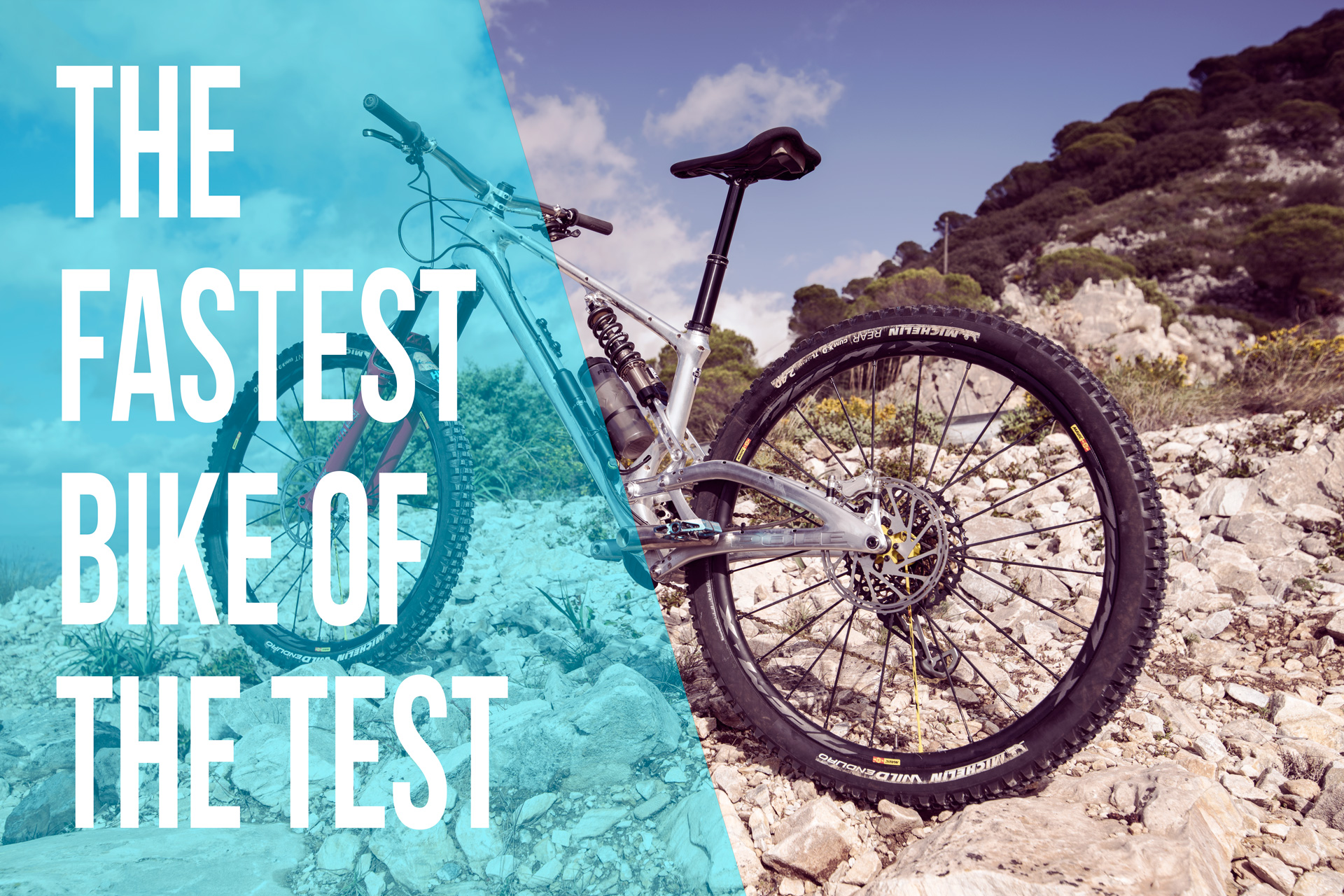
The fastest bike
We test all our bikes and try to improve their performance. Bicycle testing is often overlooked in the performance point of view, and the industry is often focused on weight and aesthetics. It’s easier to make the bike lighter because a number is a more comfortable factor to the marketing department. When the new weight is there, and the bicycle has gone through the needed testing to clear the norms and standards, the feeling of the rider is manipulated through marketing. Aesthetics, brand, and image are the keywords of any consumer marketing agency because facts are hard to make relevant. Also, pictures, videos, and marketing jargon have no real responsibility whereas facts need to be proven. I might be manipulating you as well because if Pole were not the faster bike, you probably would not be reading this article. Nevertheless, I would be banging my head to the wall trying to figure out how I can make our bike the fastest.
“Faster”
The word faster is often used in a subjective sense, and the word “fastest” is used when an athlete wins the world championship. However, throughout the history of sportsmanship, the results have been manipulated by doping in bikes or riders. I often get an answer from a mechanics when I question their opinions that he is confident because they have a world title. I think this argument is not relevant because there are multiple factors what leads to a world title.
Objective reviewing is a challenge
The media does tons of reviews, and they try to describe the products in multiple ways. The media does an excellent job for the consumers seeking to explain a complex product in a layman’s terms. The journalists have a tough task as they have responsibility for the community and the industry. The media needs to be politically correct as they don’t want to ruin anyone’s business for no significant reason and that’s why you don’t see a lot of bad reviews. Bad products are not usually reviewed. A bad review is harder to do because the media really need to make sure that you check all the facts and have a complete view of things. Some journalists focus on the feeling, and some are fascinated by numbers or parts. German media does tons of mechanical testing, and they try to crunch the bike into numbers. Perception and even numbers don’t have any direct relevance to performance at all. I like all these numbers but often when I get the bike that looks good on the paper, is not good on the trail. I have to give kudos to Seb Stott from Bikeradar. Seb puts a lot of effort into real life testing rather than only lab testing. Also, Enduro Magazine has put a lot of effort into testing products in real life situations with relative performance targets. I am a designer and founder of a mountain bike company but I am also just a mountain bike enthusiast. I do my own testing on parts as a part of my job but whenever I’m purchasing riding gear and accessories, I can count on these media that they have done their job right. I think I have also a good relationship to these media as a mountain biker.
Pole has got a lot of good reviews, and I’m happy about it, but I think that the media can not go all out on a real performance test. First of all the problem is that testing bikes are actually a tough job. There are a handful of journalists who can actually spend hours on a bike or ride consistent runs on a hard track, to begin with. Testing is tough and is why some journalists use the company delivered “media package,” and some even call a day’s ride a “review.” What I’ve been frustrated about is that every now and then there is a mantra that the journalists are repeating: Pole’s length and how it might not be suitable for them in some particular way. The truth is that all the other manufacturers are stretching their bike a little by little towards the same lengths that Pole has already. What I’m personally frustrated about is that nobody seems to have any interest to investigate the imaginary consensus that says that Pole has a high straight line performance but riding tight corner is claimed to be difficult. From my experience, you can not trust your feelings about estimating the bike’s performance. Also, I’ve found out that anyone can manipulate you to think something when you ride a specific bike. You let your preconception to decide over the facts.
Getting things proven
Earlier this year Steve Mathews posted a vlog that stated that a perfect front center to rear center balance at 50% travel is 1:1.6. Steve’s opinion is based on his theories and not on proper real-life testing. Steve rode one of our Machines with a soft setup as I did not have a right spring for him and one of the brakes wasn’t in mint condition as we swapped one brake to another bike which failed during the trip. I think Steve did not follow the unwritten media code I just stated in the first chapter. If you are going to say something bad about a bike, you need to study the bike throughout. Steve did say though, that he thinks our bike is worth reviewing so my opinion might be just polarized in my own head. What I’m sure though, is that as a scientist, Steve should have done a better study instead just relying on his confidence. Steve’s explanation through numbers sounds convincing because he is very good at explaining scientific stuff. I respect Steve’s suspension knowledge, but I was a bit disappointed as he did not tell me at all that he is actually reviewing the bike for his vlog. If I would have known that I would have prepped the bike with proper gear and a proper test. We were in Whistler after all. That would have been a perfect place for a proper test.
Usually, when I get mad about something, I get a brainstorm in my head, and I start doing something about the thing that I’m mad at. So, this time I came up with a test that would prove by a fact which bike is the fastest. To show our point that Pole is not slow in corners or eat more energy from the rider, we created a test that is based on research of JF Burr 2012 and Chiudley JB 2015. These two pieces of research show that handgrip endurance is the most significant factor when riding downhill and we think that after the track if one bike is superior to another, the hand grip differences should tell you which one is eating more your energy. We excluded pedaling power meters and heart rate sensors because those methods are unreliable on mountain biking and these two studies already show that the hand grip is more important than your aerobic fitness. What Steve claimed in his vlog is that Pole Machine needs more power from the rider to be able to load the front tire to get enough grip for a corner. We took the test with Pole Stamina and a bike that has precisely the weight balance that Steve thinks is perfect (1.6).
We agreed that a long track with a lot of unsupported corners would be the best test for this. We also felt that it’s good to perform the analysis among two very different riders. The test subjects were Matti Lehikoinen and me. Matti’s skills are beyond mine. My best score in EWS is the top 160 and Matti has the best score of the top 10. Also, in the comments section in Youtube vlog, Steve said that Machine could be useful for people that have a strong upper body. Also, this is why we thought it’s good to test with Matti and me. Matti and I have a medical record that is not very pretty. My left-hand collarbone has been operated several times. My right clavicle is dislocated, and my right wrist has a strain that is not recovering. You may also know that Matti’s body has been through more damage than a terminator because his both wrists have broken and his shoulders aren’t so good either. We can’t say that we are solid on our upper bodies. We have roughly the same squeeze power of 50kg’s. A high squeeze rate with our age would be 70kg’s, so we are pretty average.
The test
We chose the test subject to be Pole Stamina and bike X that has the weight distribution of 1.6 as Steve mentioned. Both bikes were equipped with the same drivetrain, dampers, forks, wheels, tires, brakes, handlebars, and grips. We wanted to minimize the factor from parts. The bikes were set up by Matti so that we did no changes between ride. My guess from the outcome was that we would use all the physical resources that we have and the times would be different. From our previous studies, we have found that Pole’s have been roughly 2-3% faster to their competition. We chose a track that was 3,8km long and had 612m descend. Matti’s average time was 7m 51s and mine was 9m 27s. Our goal was to ride as fast as possible to the finish, and after finishing, we needed to press as hard as possible with both hands the power meters to show how much energy we have on our hands. We trained the track two times to remember the track and conditions, and we both rode the track two times with both bikes. We swapped the bikes on each run. We used professional devices to measure time and power, and the timing device is comparable to the timing devices on the races.
The results
We got some impressive data. On a test without any exercise, Matti and I pressed roughly the same amount of power to the power meters, but after each ride, I lost half of the power where Matti did not suffer nearly any power loss. I surprized Matti in the morning, and he pressed roughly 10% less to the meters in the morning than after the ride. Looking at the data, I was right. Both used all resources and only the times were different. Matti was 2,4% faster on a Pole, and I was 3% faster on a Pole. On the power meters, I had no difference in the average power left after the ride. Matti had 1% average more energy left with the bike X. Now, if Steve is reading this, I want to say that we even changed the shock on the Stamina so that the bike had the same travel as Machine to see if that would change the result. The shock swap should have altered the rider balance so that the time would be different but the time was in line with the test. Also, this review is done with respect for Steve’s Vorsprung channel as well. His channel is worth replying to 😉
Here is the full test track rode by Matti Lehikoinen
Matti’s thoughts
I have always had an approach to testing that faster is better. The only way to test, what is fastest, is to ride against the stopwatch. It is really hard to tell by the gut feeling if something is faster or not. You can get pretty close and get the bike feeling nice and comfortable to ride but most of the time comfortable is not the fastest.
Getting the first prototypes and riding them is always fun and games. There is nothing better than riding the latest and greatest stuff. The first ride is always exciting because your emotions are high and you are pumped to ride something new. After the excitement has worn off and you are starting to feel comfortable on the new bike it is time to put it against the clock. It is easy to get carried away and blind-eyed with new bikes because you are going by the gut feeling and thinking it is the best thing ever. We have done months of testing on the stamina now and are really happy where we are. Once we were pleased with what we got we want to see how it would compare against more traditional geometry and different suspension designs. That’s when hard work for the test rider starts when you have to ride it against the clock to really see how fast it is.
We did back to back testing with the different bikes that had all the same components on them. The difference that the bikes had was geometry long and slack vs. more traditional geo and wheel sizes 29 vs. 650b. Interestingly 650b bike felt faster because it was more agile and alive feeling. At high speed, the Stamina 29” wheels, slacker head angle and longer wheelbase really came to play, and it was really stable and comfortable to ride. At tight corners, it takes little time to get used to the bigger wheels and longer wheelbase, and it might feel little sluggish to get around the corners, but in the end, it works out just as fast as shorter bike out of them.
We did testing with two riders, and everyone rode the same bikes. Even though both riders were on a different speed and skill level the results were quite surprising. In the end, Stamina turned out to be between 2.4-3.4% faster for both riders. The result that we got might not sound like a staggering number, but on average, Stamina was 11-17 seconds faster on the test track, on the same day, same conditions. If you’re racer why wouldn´t you go for 2-3% advantage if you can and even if your not a racer it is always fun to go faster isn’t it?
There was also one more thing left to find out: would a longer and bigger bike consume more energy? We found a way to measure this, and there was no difference what so ever on power levels after a big track. Results, in the end, were identical no matter what bike we rode. We found out that adjusting your own riding style and elbow hight made a difference in your power more than anything else.
So we pretty much came to a conclusion that even you might feel faster your actually not going that fast in the end. So can you judge bikes by just how they feel? Sure you can, but it depends what your after. Cars always get tested on the track against the clock how fast they go so why shouldn´t bikes be?
The feelings
We both felt “better” when we jumped on the bike X in the beginning but also felt “better” when we hopped back on Pole. This is very strange, but it might be something to do with different feedback from the ground. We felt that the bike X had better small bump absorption, but when we hopped on a Pole, we felt more confident. The smaller bike also felt good because it was nimble, but when the things got rough, that thought went out from the window. We use Strava also, and when I compared all the results, it showed that the bike X I was losing time at the most technical parts of the track where all the tight switchbacks were.
The conclusion
I did the test also because I’m designing a shorter travel version of the Stamina and we want to focus even to the nimbleness without losing the Pole’s best part that is balance, climbing and rider confidence. I learned a lot from the test, and now I have new ideas to create the next bike. We will try to keep the bike at least 1% faster and invest that 1-2% to the fun factor. We will continue testing and making bikes faster all the time because we know that everyone wants to feel fast. We also have the Pole Enduro Race team, and we want to win the world title. Being 2% faster means that you can shave forty seconds off the overall time of 30min enduro race.
Insights
This test gave us the confidence that we know what we are doing. We know how to create a specific bike, and we are good at that. I still believe that the most significant factor is the rider, hands down. After the test, I started to look at Matti’s riding from a different perspective. This MTB Jedi didn’t lose any of his hand power where I lost half. It started bugging me, why is that? We both were 2-3% faster on the same bike, but why our power levels were so different? When we compared our heart rates, they were about the same as well. We weren’t exhausted after the ride, but my hands were sore where Matti complained about calf pain or his legs and core.
I started to follow Matti on the tracks tried to look what he’s doing. I’ve been filming him for a while now, and I have been trying to find the technique. I have a black belt in Judo, and I know that a good technique saves you a lot of energy. Matti gave me some advice, and I watched him riding, and the next day I shaved off one minute off the same test track. I was blown away how much his technique gave me more energy. It was a shame that we did not have the power meters with us. If I was a consultant or a salesman, I could say that if you buy a Pole, you can save 2% of your time, but if you join our movement and listen to our advice, you can be 10% more efficient.
